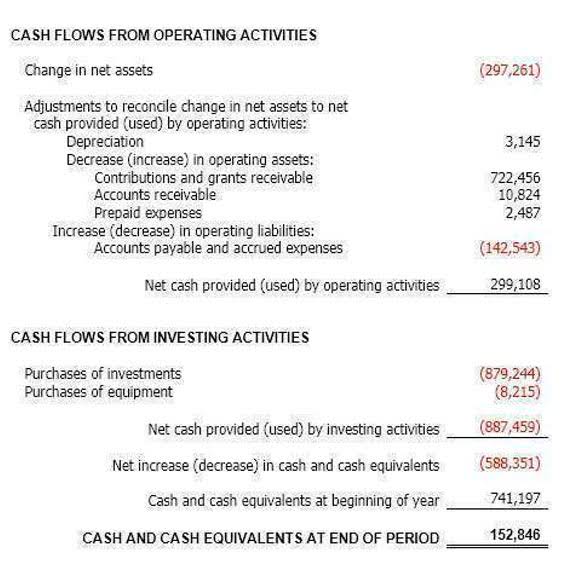
It tells us if a business has enough money to handle its daily expenses and to invest in its future. The Change in Net Working Capital (NWC) measures the net change in a company’s operating assets and operating liabilities across a specified period. Proper management of working capital is making sure you keep for the rainy days when it is plentiful. Even when the whole industry is facing a financial hit, positive working capital can help absolve most of those blows. There are days when you experience more sales and days when you make little or nothing. But during these periods of low or no sales, you still have to pay the workers, the utility bills, and short-term loans.
- Unearned revenue from payments received before the product is provided will also reduce working capital.
- It is important to realize that a failure to monitor changes in working capital can lead a business to run out of cash.
- Create a budget for expenses and report each of the cost components separately.
- Credit policy adjustments often lead to changes in how quickly cash comes in.
- Positive changes indicate improved liquidity, while negative changes may suggest financial strain.
Cut Down Unnecessary Expenses
A negative amount indicates that a company may face liquidity challenges and may have to incur debt to pay its bills. Working capital represents a company’s ability to pay its current liabilities with its current assets. This figure gives investors an indication of the company’s short-term financial health, its capacity to clear its debts within a year, and its operational efficiency. A change in working capital can have a significant impact on a company’s cash flow. Working capital is the difference between a company’s current assets (such as cash, accounts receivable, and inventory) and its current liabilities (such as accounts payable and short-term debt).
Understanding Change in Working Capital
This can be a temporary situation, such as when a company makes a large payment to a vendor. However, if working capital stays negative for an extended period, it can indicate that the company is struggling to make ends meet and may need to borrow money or take out a working capital loan. The essence of the concept is that if a company has a positive working capital, it means they have funds in surplus. The inverse of having a negative working capital indicates that the company owes more than it has in its cash flow. From the calculation, you https://www.instagram.com/bookstime_inc can see that the current assets exceed the current liabilities by a sizable $35,000. The online store has enough working capital to handle its current liabilities and even take on more projects.
Time Value of Money

From shifts in market demand to variations in supplier terms, various internal and external factors can influence working capital dynamics. The NWC metric is often calculated to determine the effect that a company’s operations had on its free cash flow (FCF). Another way to measure working capital is to look at the working capital ratio, which is current assets divided by current liabilities.
. How to find change in NWC on cash flow statement?
A boost in cash flow and working capital might not be good if the company is taking on long-term debt that doesn’t generate enough cash flow to pay it off. Conversely, a large decrease in cash flow and working capital might not be so bad if the company is using the proceeds to invest in long-term fixed assets that will generate earnings in the years to come. Working capital is a snapshot of a company’s current financial condition—its ability to pay its current financial obligations. Cash flow looks at all income and expenses coming in and out of the company over a specified time period, providing you with the big picture of inflows and outflows. The benefit of neglecting inventory and other non-current assets is that liquidating inventory may not be simple or desirable, so the quick ratio ignores those as a source of short-term liquidity.

Accounts Payable Payment Period
We can see in the chart below that Coca-Cola’s working capital, as shown by the current ratio, has improved steadily over a few years. A higher ratio also means that the company can continue to fund its day-to-day operations. The more working capital a company has, the less likely it is to take on debt to fund the growth of its business.

Implement effective credit control measures
An adequate amount of Net Working Capital would ensure that you earn a higher return on the amount invested in your current assets. For example, interest on short-term and long-term loans taken to finance such current assets. In other words, you have the raw material required to manufacture goods without any delays. calculating change in working capital Furthermore, you collect accounts receivable on time and pay accounts payable when due. QuickBooks’ Working Capital calculator measures whether a business can pay off its short-term obligations with its current assets or the operating liquidity available.
- You just have to subtract the previous year’s working capital from the current year’s working capital which we have just calculated in the bellow table.
- They are the current assets of the enterprise, which are automatically adjusted through the statement of changes in working capital.
- Every substance that leaves the company’s financial pocket (either in cash or not) is considered a liability.
- On the other hand, examples of operating current liabilities include obligations due within one year, such as accounts payable (A/P) and accrued expenses (e.g. accrued wages).
- Measuring changes in working capital can provide valuable insights into a company’s liquidity, operational efficiency, and overall financial health.
- For example, a service company that doesn’t carry inventory will simply not factor inventory into its working capital calculation.
Ask a Financial Professional Any Question
Current assets include cash (and cash equivalents), marketable securities, inventory, accounts receivable, and prepaid expenses. Current liabilities include accounts payable, short-term debt (and the current portion of long-term debt), dividends payable, current deferred revenue liability, and income tax owed within the next year. Working capital is calculated from the assets and liabilities on a corporate balance sheet, focusing on immediate debts and the most liquid assets. Calculating working capital provides insight into a company’s short-term liquidity and efficiency. A company with positive working capital generally has the potential to invest in growth and expansion.

Finally, the Change in Working as calculated manually on the Balance Sheet will rarely, if ever, match the figure reported by the company on its Cash Flow Statement. So, if the company somehow classifies these items within Working Capital, remove and re-classify them; they should never affect Cash Flow from Operations. When the company finally sells and delivers these products to customers, Inventory https://www.bookstime.com/ will go back to $200, and the Change in Working Capital will return to $0. In this tutorial, you’ll learn about Working Capital and the Change in Working Capital in valuations and financial models – what they mean, how to project these items, and how to check your work.

